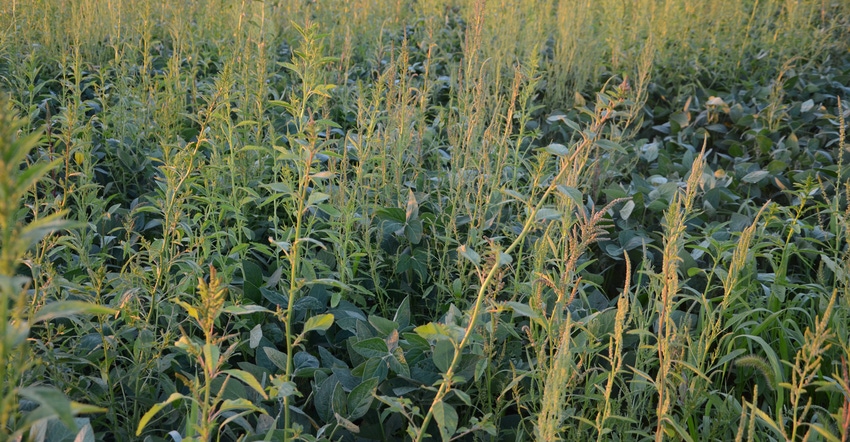
Waterhemp is like an identity thief. You don’t realize it’s there. Then suddenly, waterhemp plants are all over the place. It’s like when you finally see that zero balance in your checking account, and you know something is up. In both cases, it’s very late in the game, and the destruction can be hard to reverse.
Chad Threewits says waterhemp, Palmer amaranth and other weeds can deliver that type of unwanted surprise. He’s an agronomy service representative for Syngenta.
Here’s an exclusive Farm Progress interview with Threewits that explains why paying attention to weed escapes is even more critical now. He also offers potential ways to defuse the ticking time bomb before it explodes.
Why are you emphasizing the prevention of weed seed production now? China instituted tougher restrictions on the amount of foreign material allowed in shipments of soybeans. As far as we know, this had nothing to do with other trade issues which have cropped up. These regulations went into effect Jan. 1, 2018.
Why is the change important for farmers? China lowered the allowable amount of foreign material from 2% to 1%. Weed seed which winds up in the grain tank and makes it to the elevator adds to the overall amount of foreign material. It’s likely that this change will trickle down to farmers in the form of discounts.
Why else are you concerned about increasing weed pressure in 2018? Farmers in areas which already have waterhemp or Palmer amaranth know how tough they can be to control. Waterhmep is moving eastward. I saw a lot more of it in my territory in Indiana in 2017. I also received numerous calls about chemical harvest aids late in the season. At that point, the weed seed is there and will end up in the grain tank and add to the weed seed bank.
Farmers have always dealt with weeds. How are weeds like waterhemp and Palmer amaranth different? They can germinate much later in the season than many other weeds. They can still germinate in midsummer and produce plants that produce seeds. They can germinate after you apply your postemergence herbicides.
As a crop protection professional, what can you suggest as a possible remedy? We believe residual herbicides should be an important part of the strategy to control these weeds. Many people include residual herbicides in a burndown pass or a preemergence application. However, even the best residual herbicides begin to run out of steam after three to five weeks. If you apply them before or at planting, there may not be enough chemical left to prevent weeds from germinating in midseason.
We suggest adding residual herbicides in the postemergence pass, as well. If you apply a residual herbicide with activity on these weeds in, say, June, there is a much better chance it can prevent weeds from germinating through midsummer.
What specific options do you suggest? You could use Prefix or Flexstar GT from our lineup. Other products are also available. Some of these weeds may be resistant to PPO products, including Flexstar. Prefix contains Dual, a Class 15 site-of-action herbicide. There is no known resistance in waterhemp to Dual. I would make sure to include a Class 15 residual herbicide in the postemergence application.
About the Author(s)
You May Also Like




